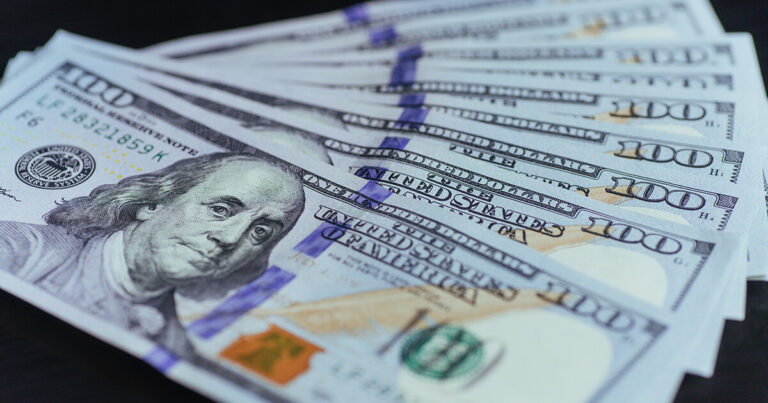
This week’s forex news analysis focused on the standoff between Russia and Ukraine. The impasse created net risk sentiment in the financial market, which led to risk assets taking top spots. In addition, rate hike vibes and gains in commodities also boosted the risk assets.
Overall, Kiwi dollar took the top spot, followed by Aussie dollar. And a string of poor economic updates and the Ukraine crisis pushed the euro to the bottom of the pack.
Fundamentals

Russia/Ukraine crisis and economic data significantly drove the performance of the G7 currencies.
Here is how it happened!
Still no clarity on the Russia/Ukraine Crisis
The political situation in the Ukraine crisis had a mixed effect on forex news analysis. Sentiments started positive but then turned sour later in the week. On Monday, Sergei Lavrov, a Russian Foreign Minister, urged President Putin to give more time for diplomacy to resolve the Ukraine crisis.
On Tuesday, market sentiment turned positive as Russia announced the end to the military drill. And troops would also return to base. But it was a lie! Instead of withdrawing, Russia deployed seven thousand more soldiers to the Ukrainian border. And, of course, Putin denies the claims.
On Friday, investors turned bearish. This was in response to news of shelling in Eastern Ukraine. Also, reports that Russia still has over 150 thousand soldiers at the Ukrainian border escalated the sell-off.
Forex news analysis reflected on Economic Updates
Inflationary pressure data dominated this week’s economic updates. Global inflation rates continue to rise, with production prices jumping to one percent in the US and UK inflation rising to 5.5 percent—a new high in 30 years.
The rising consumer and production prices increase the odds of more rate hikes. Meanwhile, Australia’s central bank may hike rates as early as June. And a recent FOMC meeting shows the Fed is ready for a rate hike and shrink balance.
In addition, soaring prices on global commodities boosted demand for risk assets. As a result, Australian and New Zealand dollars closed in the positive territory this week. While both fundamentals affected the market, the Russia/Ukraine crisis ultimately grabbed headlines.
G7 Economic Review and Fundamental Analysis
Table: g7 currencies performance summary
| Currency pair | 12th Feb 2022 | 18th Feb 2022 | Average price | Percentage change | Remarks |
| USD | 96.356 | 96.022 | 95.974 | 0.02 | increase |
| GBPUSD | 1.3526 | 1.3590 | 1.3569 | 0.2212 | increase |
| EURUSD | 1.1344 | 1.1321 | 1.1343 | 0.2467 | drop |
| USDCHF | 0.9244 | 0.9215 | 0.9228 | 0.4413 | drop |
| USDJPY | 115.53 | 115.00 | 115.31 | 0.36 | drop |
| USDCAD | 1.2728 | 1.2749 | 1.2715 | 0.1021 | increase |
| AUDUSD | 0.7125 | 0.7173 | 0.7165 | 0.5326 | increase |
| NZDUSD | 0.6615 | 0.6699 | 0.6663 | 0.7823 | increase |
US Dollar Rate News
The dollar continued its weekly rally gaining 0.02 percent to close at 96.106. This follows a previous 0.63 percent rally. US dollar rate news shows inflation, and retail sales data supported Greenback earlier in the week. Both data were positive, bolstering the FED’s outlook on monetary policy.
Retail sales rose by 3.8 percent despite consumer prices spiking, reversing a previous 2.5 percent drop. Wholesale inflation also picked. Production index increased by one percent following an earlier 0.4 percent modest increase.
Later in the week, jobless claims impacted forex news analysis. Initial jobless claims increased to 248 thousand from 225 thousand. But still, the rise was not sufficient to derail Fed’s rate hike ambitions.
FOMC meetings also come into focus later in the week. Minutes from the meeting show that committees are willing to implement rate hikes during meetings instead of quarterly. Investors termed the minutes more dovish than expected, which leveraged riskier assets.
The Russia/Ukraine situation favored the dollar. As sentiments shifted negative investors run the safety of safe-haven currencies including the US dollar.
Strength of British Pound to US Dollar
Sterling pound also continued on a weekly rally. In the week, it gained 0.18 percent to 1.3589. Previously, it had surged by 0.24 percent. UK posted positive economic data at the start of the week, which uplifted the strength of British pound to us dollar.
Claimant counts declined by almost 32 thousand, leaving the unemployment rate unchanged at 4.1 percent. But annual inflation rate jumped to 5.5 percent from 5.4 percent. On Friday, retail sales data further supported the pound.
The sales rose by 1.9 percent. Unexpectedly, the sales picked amid a continued spike in consumer prices since the start of this year.
Euro vs US Dollar News
Euro loses again! Euro vs US dollar news shows the euro weakened by 0.25 percent to 1.1322, after a 0.86 percent last plunge. GDP and economic sentiment affected the euro’s performance earlier in the week.
As expected, the Eurozone’s fourth-quarter GDP rose by 0.3 percent. Economic sentiment weighed on the euro. For example, while Germany’s Economic Sentiment Index climbed to 54.3 from 51.7, eurozone index fell to 48.6 from 49.4.
Industrial production rose further by 1.2 percent following a previous 2.4 percent increase. However, Eurozone’s trade deficit widened as supply chain constraints bite. As a result, the trade deficit widened to 4.6 billion euros from 1.5 billion euros.
Swiss Dollar to USD
Swiss franc gained 0.4413 percent to 0.9228 against the dollar. Previously, it had gained 0.0216 percent. Economic updates and the Ukraine crisis affected swiss dollar to usd exchange rate.
Production and Importation Price Index increased by 0.6% in January, and trade balance rose 3.18 billion Swiss francs.
Dollar to Canadian Dollar Exchange
The loonie reversed previous gains and fell by 0.1021 percent to 1.2752 against the Greenback. In the week before, it had appreciated by 0.16 percent. Retail and inflation data impacted dollar to Canadian dollar exchange rate. The data provided mixed reactions to Lonnie.
While consumer prices rose, retail sales dropped. The annual inflation rate accelerated to 4.3 percent from four percent; consumer prices increased by 0.8 percent, and retail sales fell by 1.8 percent.
Over the week crude oil prices fell by two percent, weighing heavily on the Canadian dollar. The performance of crude oil significantly impacts the strength of Lonnie.
Forex News Analysis in Asia Pacific Region

It was a bullish week for the safe-haven yen, Aussie and Kiwi Dollar. All these currencies benefitted from the Russia/Ukraine crisis.
US to AUD Currency Rate
Australian dollar rallied for another week. This week, it appreciated by 0.5326 percent to 0.7177. Previously it had rallied by 0.8338 percent. Russia/Ukraine crisis weighed on US to aud currency rate, boosting the Aussie.
Later in the week, employment data bolstered Australian currency. The employment rate remained unchanged at 4.2 percent. Notably, employment picked up by over 12 thousand, but full employment declined by 17 thousand.
In the RBA meeting on Tuesday, minutes indicate central bank is closer to economic goals. But still, it awaits wage acceleration before adjusting interest rates. Forex news analysis shows Australia could hike rates as early as June. But Westpac reiterated the rate hike might come in August.
New Zealand and US Dollar Exchange Rate
New Zealand dollar easily clinched the top spot this week. The Kiwi Dollar gained 0.7823 percent to 0.6697, having rallied by 0.4230 percent in the previous week. Economic data and geopolitical tension between Russia and Ukraine uplifted New Zealand and US dollar exchange rate.
First, commodity prices for gold and oil rose. Second, wholesale inflation data on Friday supported kiwi dollar. Producer prices index spiked by 1.1 percent, having increased by 1.6 percent previously.
New Zealand’s services index tumbles to 45.9 from 49.8 in January, the lowest in four months. Food prices in New Zealand rose by 2.7 percent in January. Tourist arrivals to New Zealand dropped to 16 percent from the previous 44 percent spike.
The global dairy trade index for New Zealand edged to 1,516, a few points from the record of 1,573 in April 2013.
USD JPY Trading
After previously ending flat at 115.420, yen this week rallied by 0.36 percent against the Greenback. Positive economic data and Russia/Ukraine crisis influenced usd jpy trading. Fourth-quarter GDP expanded by 1.3 percent vs 1.5 percent forecast, reversing a 0.9 percent contraction.
As a result, yearly GDP grew by 5.4 percent. However, trade data disappointed. Exports rose modestly versus imports. This caused Japan’s trade deficit to widen to 2,191 billion yen from 583.3 billion yen in January.
Japan’s inflation rate softened to 0.2 percent from 0.5 percent in January. Bank of Japan Governor Kuroda said Wednesday no reason to change the current loose monetary policy. Further, the bank will not initiate measures to uphold yield targets continually.
Core machinery orders for Japan lunged 3.6 percent against a projected two percent recession. In January, imports to Japan climbed nearly forty percent to 8.52 trillion yen. This widened the trade deficit to 2.19 trillion yen.
Week Ahead
Last week, Russia and the West traded accusations regarding Russia’s plans to attack Ukraine. In the coming week, we expect the following fundamentals to drive the forex market:
- Developments on Russia/Ukraine crisis. Russia to withdraw troops on Sunday
- Economic updates including Core PCE, Feds preferred indicator of inflation
- Central Bank of NewZealand meeting
- Surging inflation rate
- Fed’s policy tightening
What do you think? Will Russia attack Ukraine? America and western allies believe so. Forex news analysis will be watching for the impending attack on Ukraine.
Have a great week!




